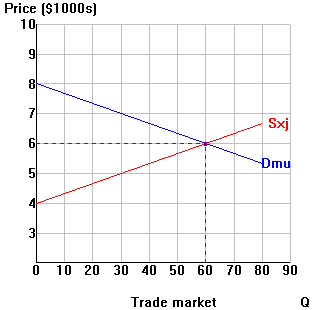
| Jim Whitney |

B. Analysis: Comparing the tariff to free
trade.
1. Price effects:
The "international price" (P*) is the price which
the importing country actually pays to the exporting country.
How high is P* with free trade? ______
With the U.S. tariff? ______
Does the tariff raise or lower the U.S. terms of
trade? ______
How did you decide?
2. Welfare effects:
| --Area-- | Amount | Direction of change
in general (+,-,0,?) |
|
| Dexporter welfare: | |||
| Dimporter welfare: | |||
| Dglobal welfare: |